Types of Antique Necklaces
Over the many years we’ve been trading in antique necklaces we’ve seen a huge number of different types and styles that are a testament to the creativity and skill of jewellers throughout the ages.
To help you understand the breadth of choice you have when investing in an antique necklace we’ve put together this guide to showcase the vast array of different types available.
Chain Necklaces
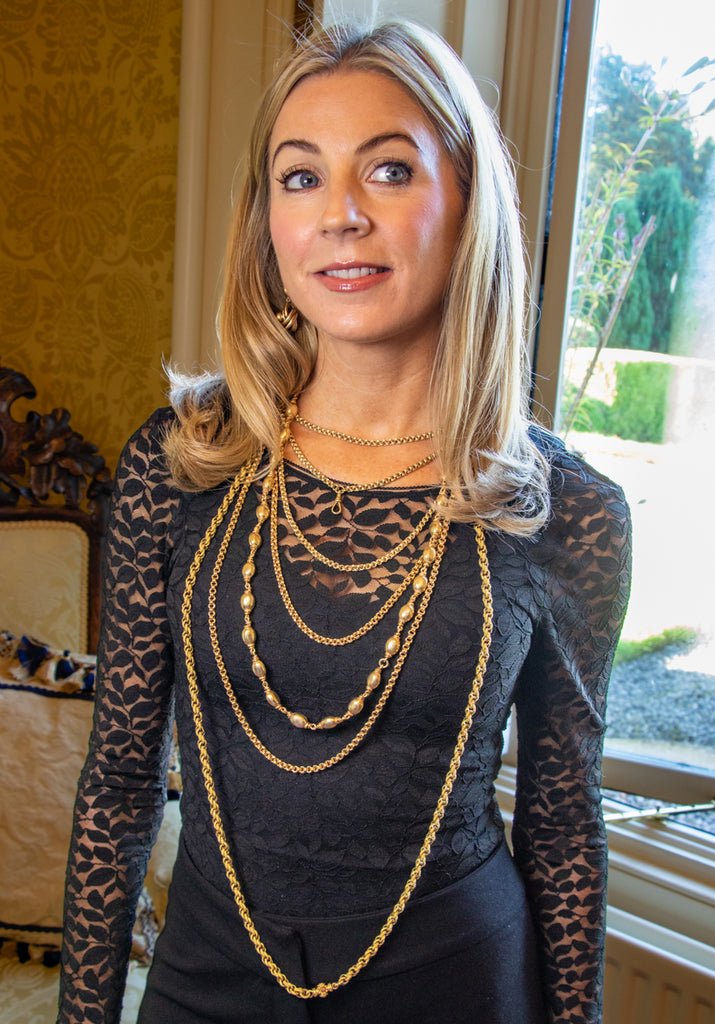
Most necklaces are based around a chain of some kind, but the type and arrangement of chains can vary considerably. Cable chains are the most common and easily recognisable, with an array of identical links. Curb chains are similar, but the links are twisted so that the chain can lie flat against the skin. Snake chains are fashioned from a great number of fine links that interlock in a seamless way to mimic the appearance of snake skin.
More elaborate chains include the figaro chain, a mixture of short and long links, anchor chains, which have a supporting bar in the centre of each link for added strength, and box chains, which have squared links rather than oval or circular.
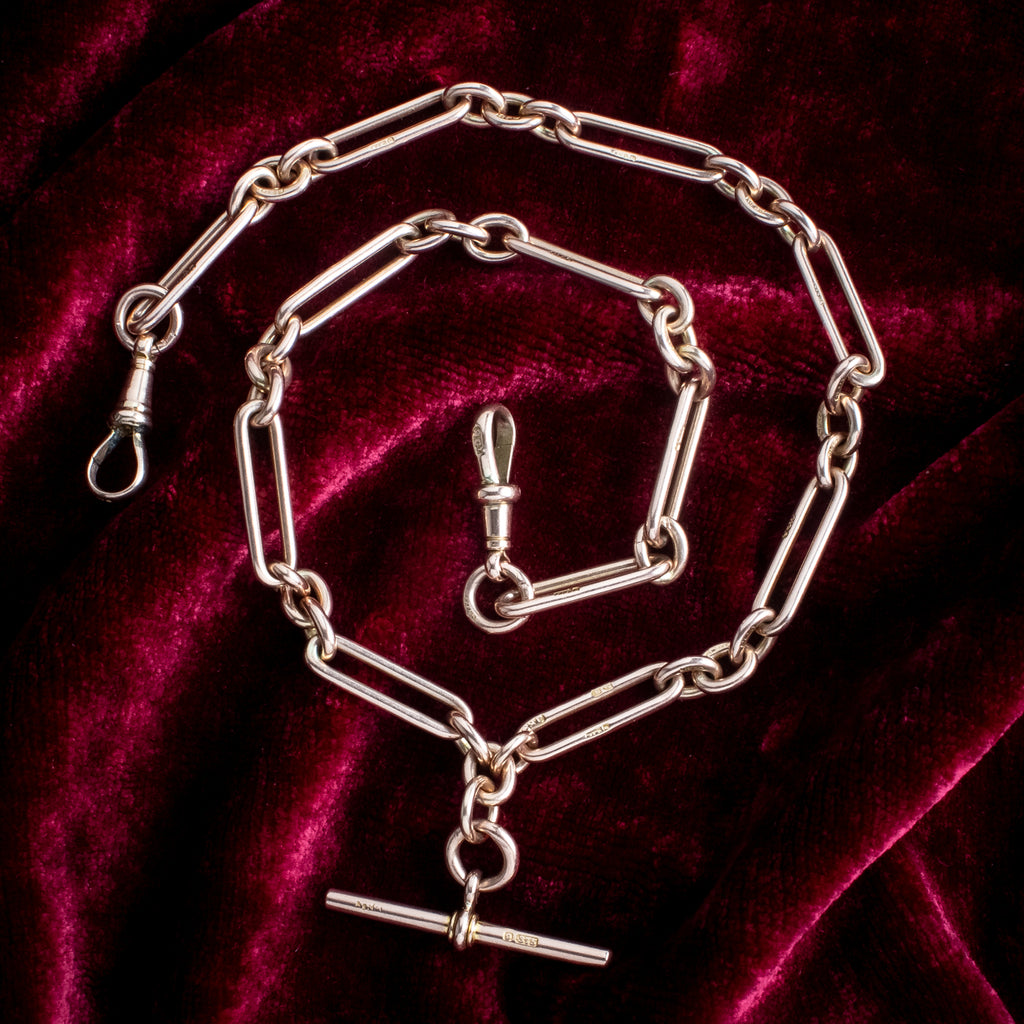
Some chains are specific to the era in which they were produced. Albert chains, made to hold pocket watches, were common in the Victorian era and are still popular today even if they are no longer used for the same purpose. Georgian era chains are crafted from barrel shaped links that appear to be more substantial than they are, which was a reaction to the scarcity of gold at the time. Belcher chains are amongst the most substantial of antique chains, crafted from heavy gold links, and rumoured to have acquired their name from the bare knuckle boxing champion James Belcher, who fought in the early 1800s and favoured this type of chain.
Bead Necklaces

Some of the most valuable and extravagant necklaces have only a small amount of chain around their clasp, or on occasion only a thread that is strung with beads of precious gems. Pearl necklaces are the most common, either strung with uniform pearls or with steadily graduating size culminating in the largest as a centrepiece.
Although pearls naturally work well for these kind of necklaces the beads can be made of many other precious stones. Jade, coral and opal all bring a unique beauty to the form.
Bead necklaces are often longer than chain necklaces, and are intended to be worn as multiple layers, wrapping the neck many times to further accentuate the luxury of the piece.
Pendant and Charm Necklaces

The most common type of necklace is a simple combination of a chain and a pendant, although there are countless types and styles of pendant. A pendant can be as simple or elaborate as the wearer wants. Single stone solitaire pendants, designed to showcase a particularly magnificent stone on its own, are minimal yet no less beautiful than intricate arrangements of wirework and engraved precious metals.
Pendants can have religious or cultural significance, in the form of crosses or other holy symbols, or they can hold a more personal meaning that is tailored specifically to the wearer. Charms are most widely known as components of charm bracelets, which have many, but a single charm is often worn as a pendant.
Locket Necklaces
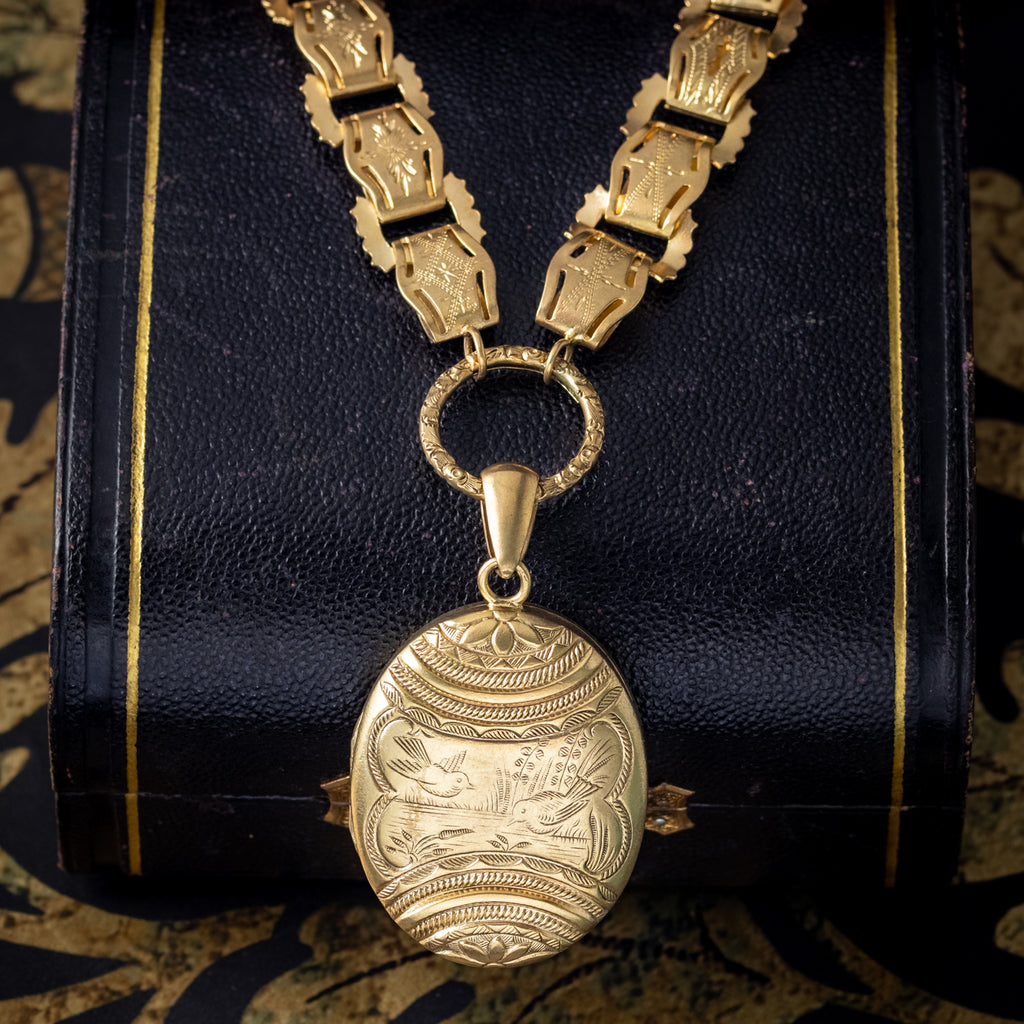
Arguably the most popular type of pendant necklaces, locket necklaces are designed to hold a picture of a cherished loved one, come in a variety of shapes and sizes. The most common tend to be oval or heart shaped, a fitting shape given that they tend to contain images of a person’s most beloved family members or friends. Lockets can be plain, polished silver or gold, but many antique lockets are engraved with elaborate designs, and may even include inlaid precious stones
Tennis Necklaces

In tennis necklaces every link contains a precious gemstone, creating a dazzling array of faceted stones that flex and shift with the wearer, creating a cascade of light. Their name comes from a diamond bracelet which was worn during the 1987 US Open Championship. The player Chris Evert was wearing one such bracelet and lost it during a match. Play was halted so she could find and retrieve it.
Due to the large number of stones it takes to create a tennis necklace they command a far higher price than other necklaces, and are a potent status symbol.
Rivière Necklaces
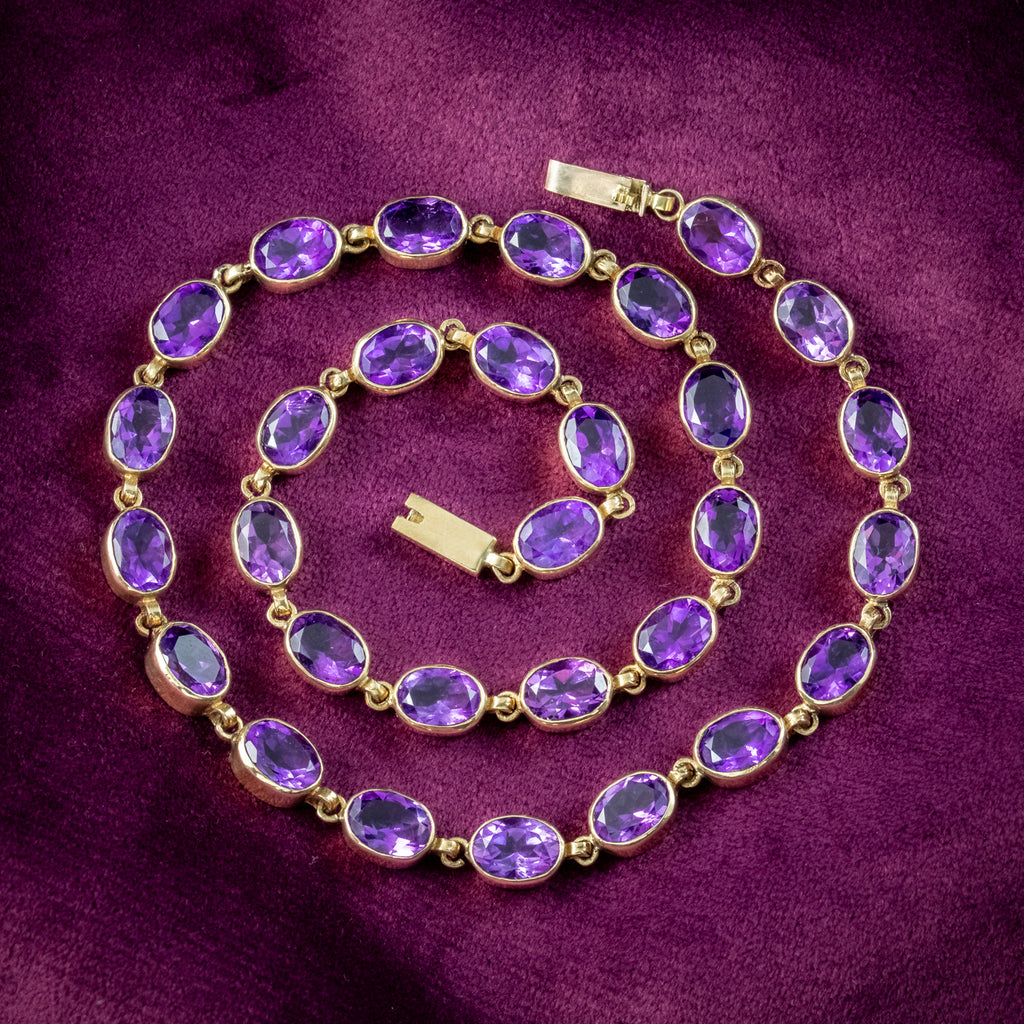
An older form of the tennis necklace, rivière necklaces are also composed of many gemstones, each with their own individual collet or prong settings. They may be in line with the necklace, or hang slightly lower.
Lavaliere Necklaces

In this style of necklace a dangling pendant is built into the chain directly, rather than via a bail loop. This means that the pendant cannot move along the chain but is anchored in place. Most lavaliere necklaces have multiple, elaborate pendants built into them, and are designed to be worn only for special occasions.
Lariat Necklaces
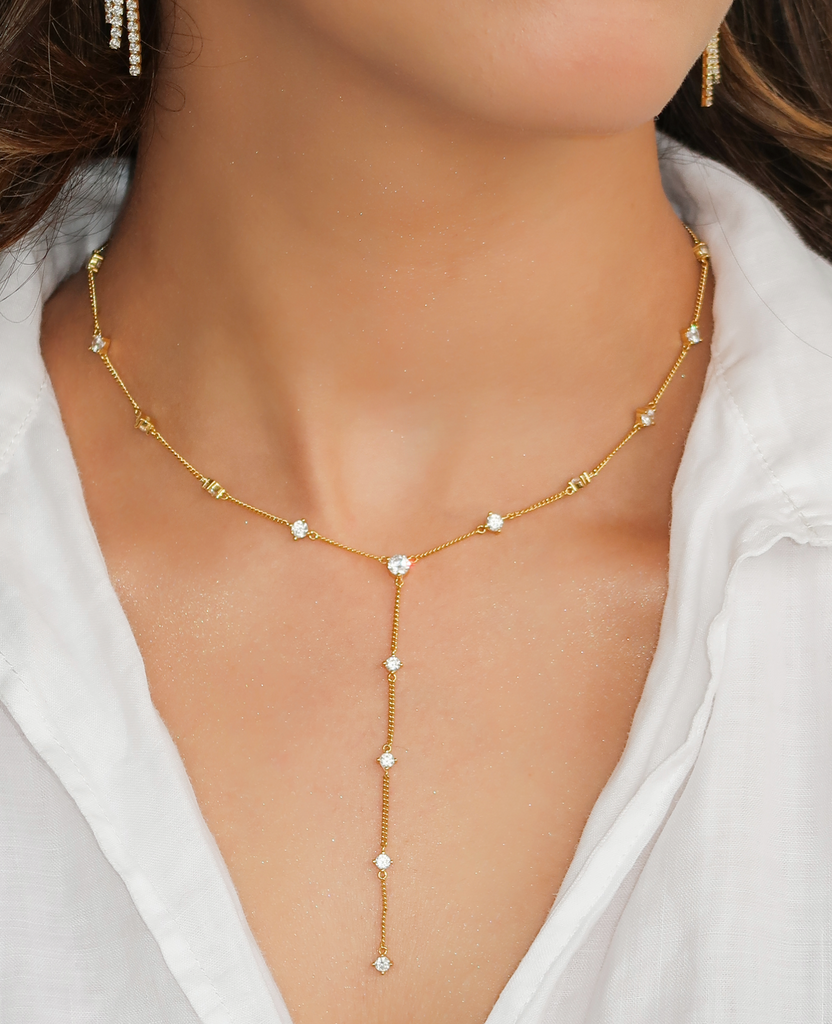
These necklaces are named from the Spanish “la reata”, meaning “the rope”. They are an open-end arrangement with a single long chain which hangs from the centre and terminates in a pendant. They can be minimalist, with a single stone pendant, or extremely extravagant, with vast arrays of shining pearls. They often have a secondary stone set into the point at which the main dropper meets the body of the necklace.
Negligee Necklaces
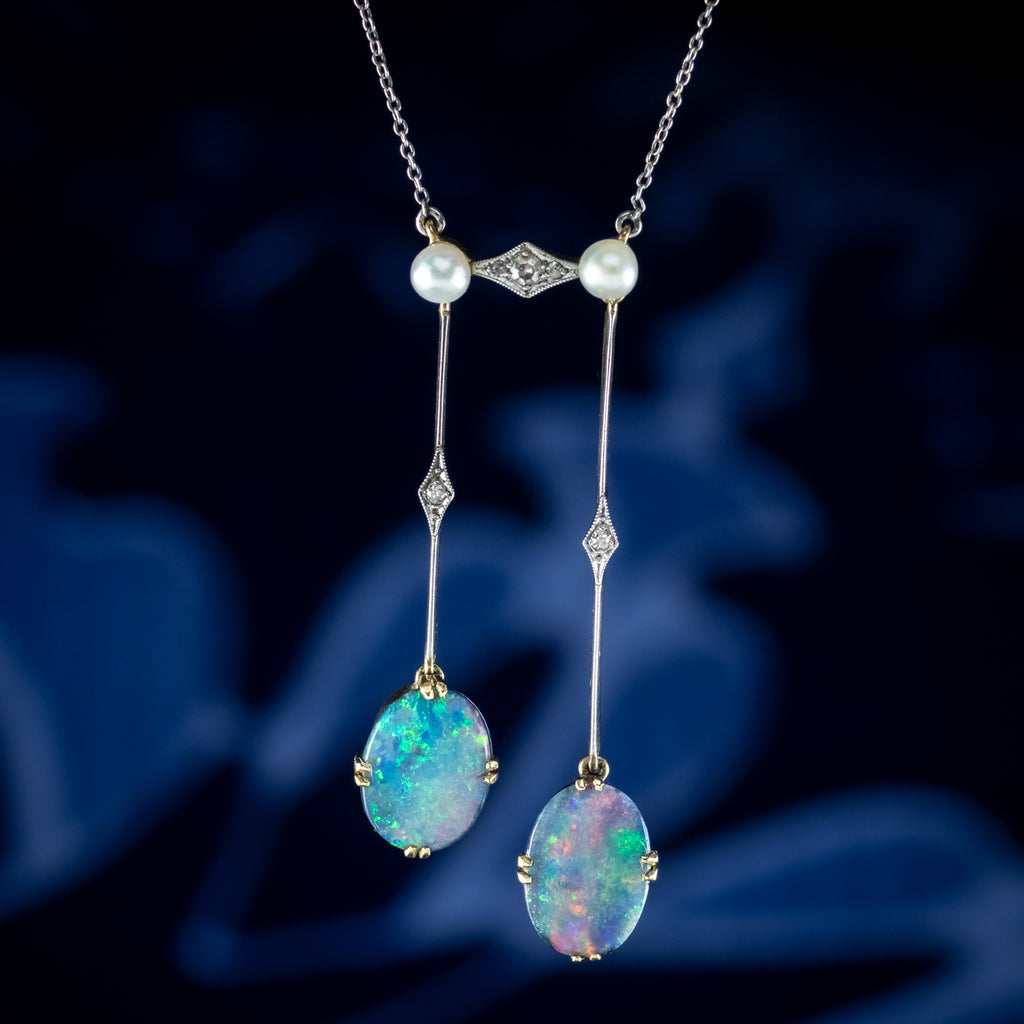
A popular design in the Edwardian era and during the 1920s, Negligee necklaces have two hanging droppers, one longer than the other, which hang from a central bar built into the body of the necklace. The body of the necklace sits below the collarbone and the droppers can be tassels, gemstones or carved precious metal, depending on the taste of the jeweller who created the piece.
Fringe Necklaces

Fringe necklaces have an array of graduating pendants that spread across the front of the piece, with the longest sitting in the centre. The fringe can be composed of a series of gemstone pendants, clever arrangements of engraved gold, tassels or chain arrangements, and they can be tremendously varied. Like the Lavaliere they are not intended for daily wear, but rather for special occasions where the wearer is unlikely to be making strenuous movements that may cause the droppers to tangle.
One of the most elaborate forms of the fringe necklace is the Cleopatra necklace, named for the queen who ruled Egypt between 51 and 30 BCE. These regal arrangements consist of alternating plain and embossed slim yellow gold bars which graduate in size, with the largest sitting at the centre.
Festoon Necklaces
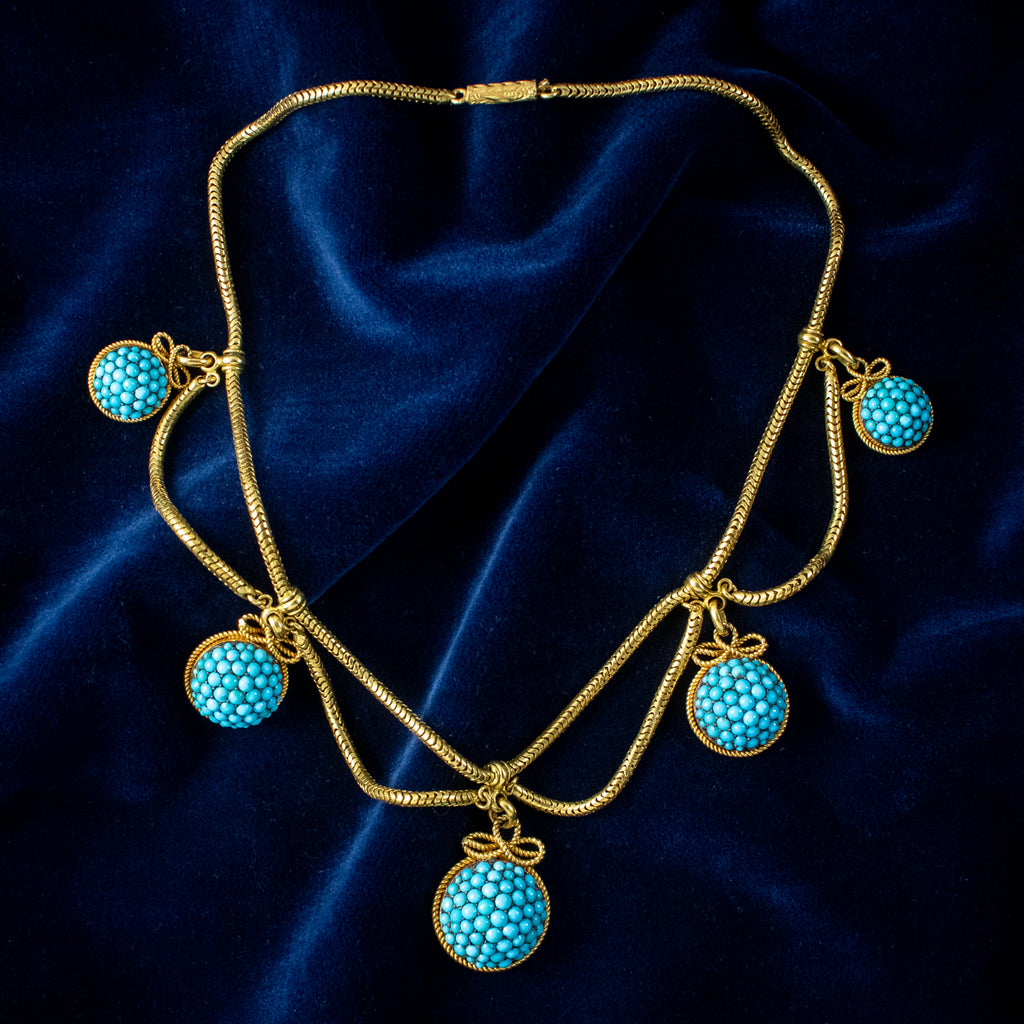
These highly ornate necklaces feature numerous interlinking chain, bead and gemstone elements that can be extraordinarily intricate. They are named from the latin “festo”, meaning a garland of flowers. Festoon necklaces can vary tremendously in the number of elements and connections, with a great variety of styles and types available.
Collar and Choker Necklaces
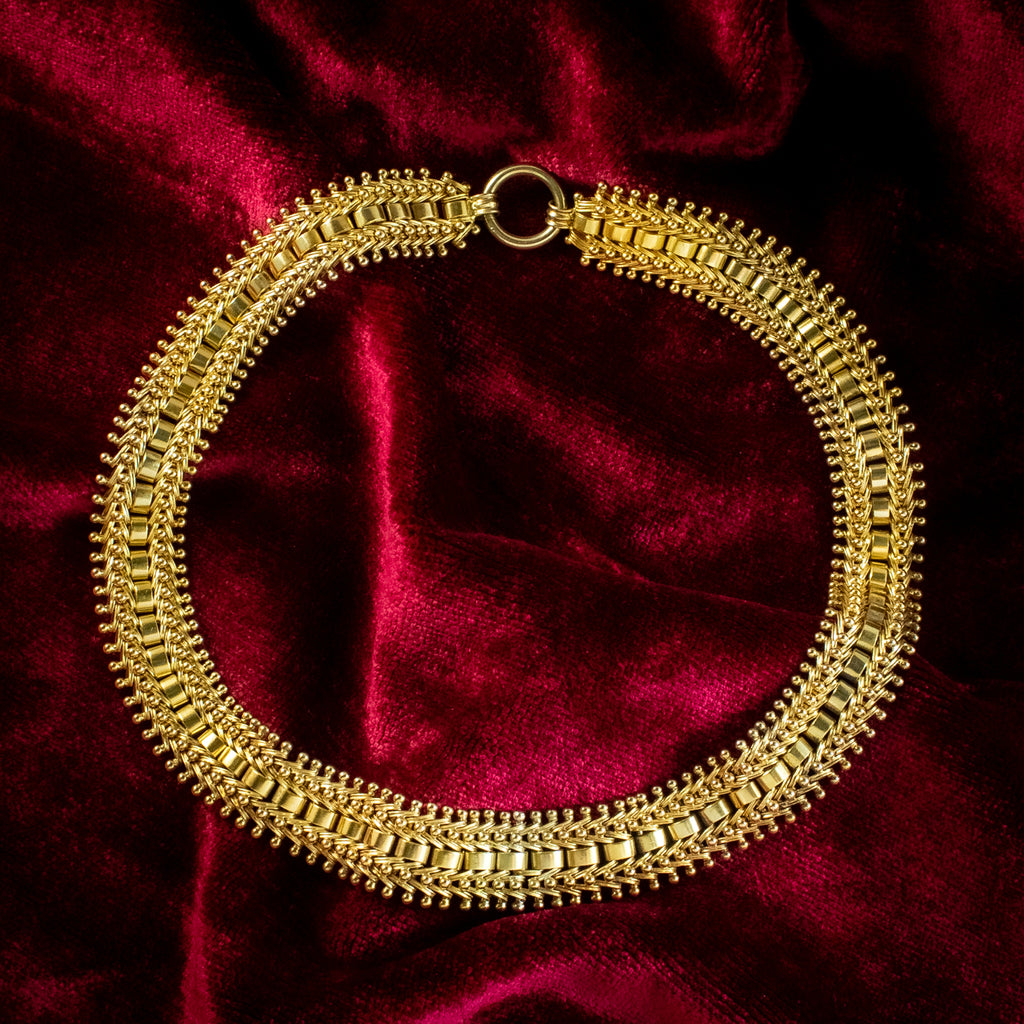
Collar necklaces are worn high on the neck with no dropper elements. Instead the focal points of such necklaces are built in line with the design itself. They are typically quite broad, which allows them to hold their position, and can vary between simple bands and ornate arrays of gemstones and faceted links. The tightest-fitting collar necklace is known as the choker, for obvious reasons.
View our hand-picked selection of antique chains and necklaces.
Looking for more information? Our friendly staff are always happy to help. You can get in touch on enquiries@antiquejewellerygroup.com or via telephone on England: 0333 700 4500
We look forward to hearing from you!


